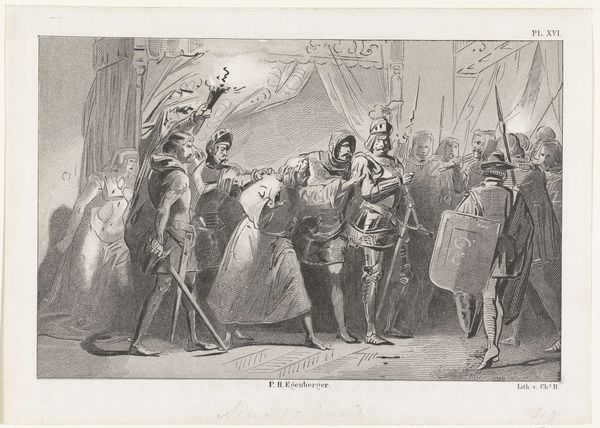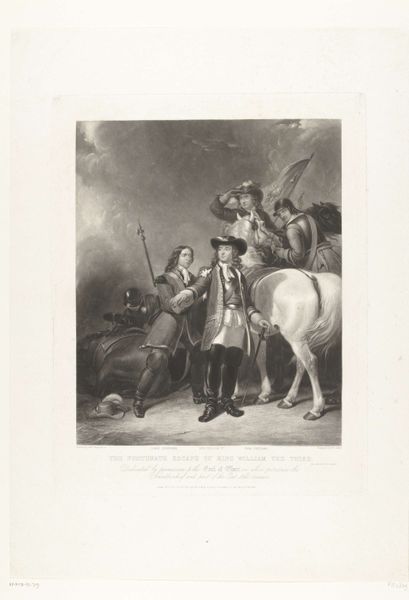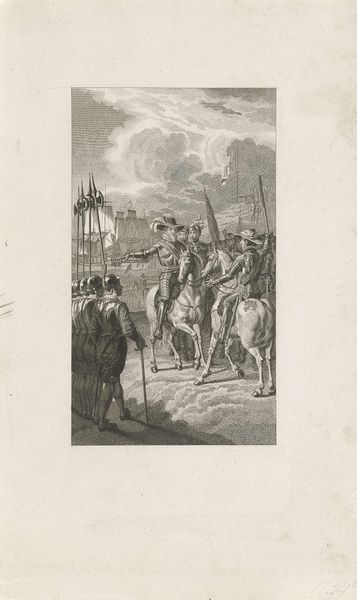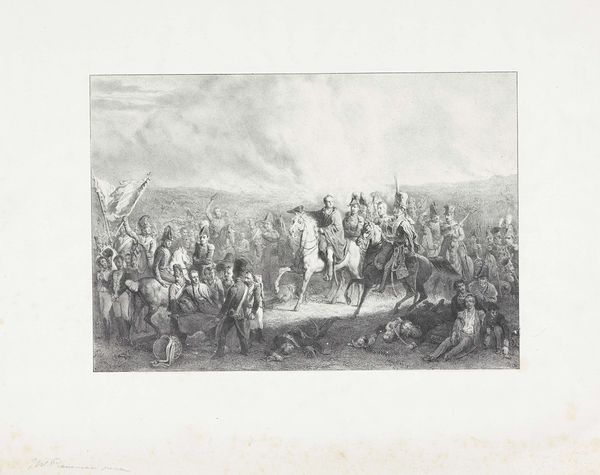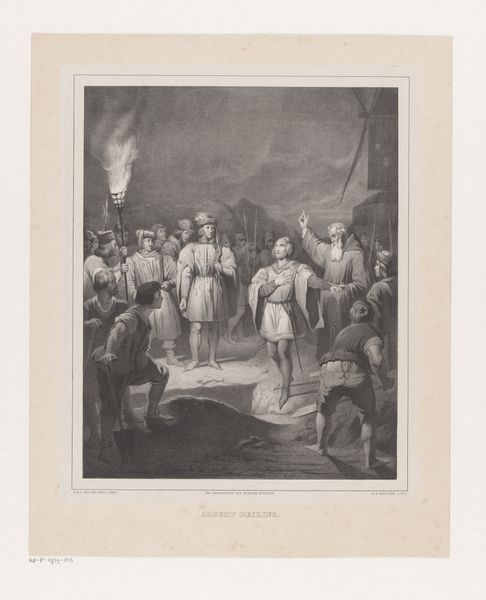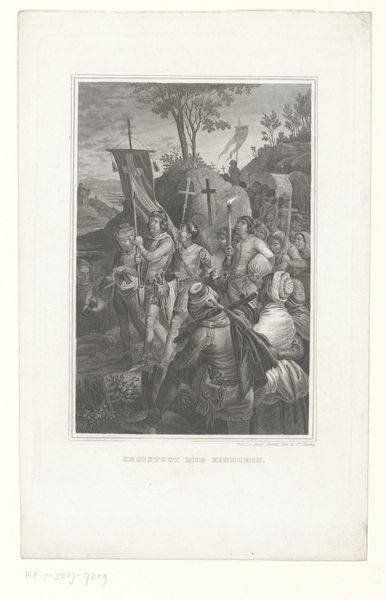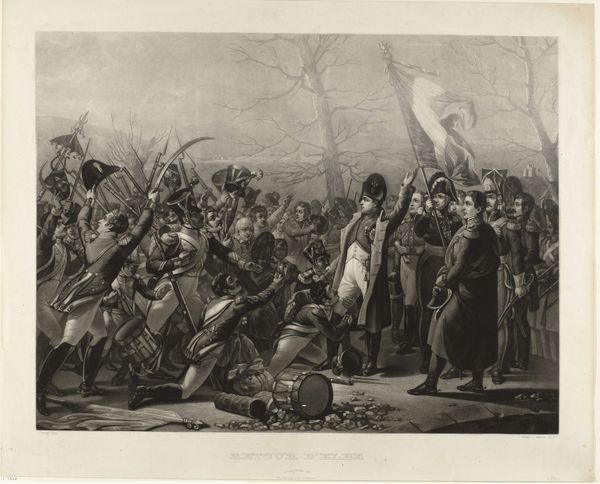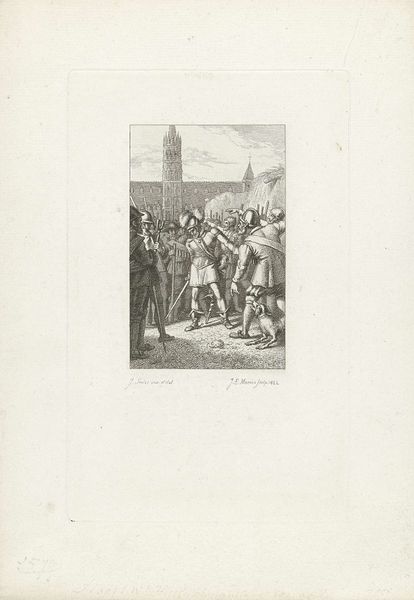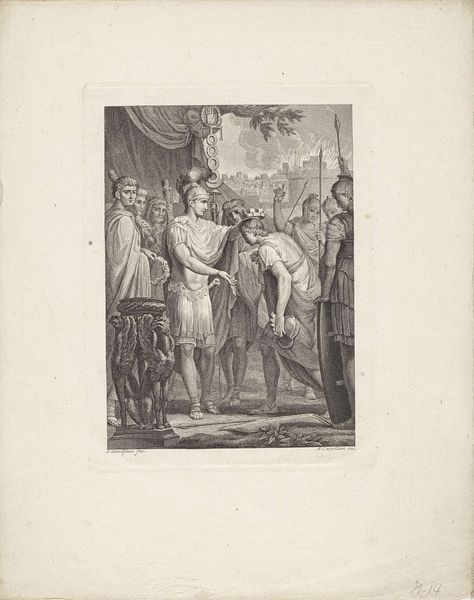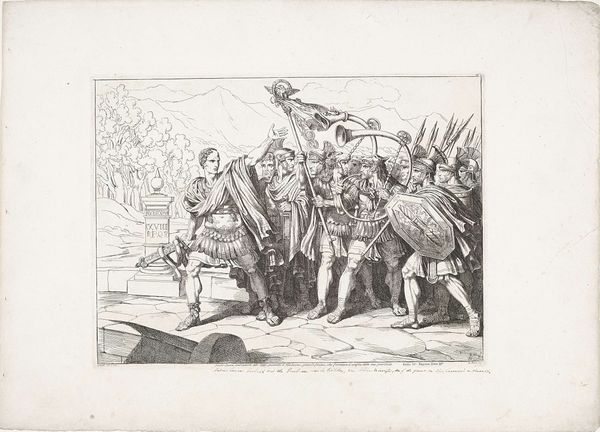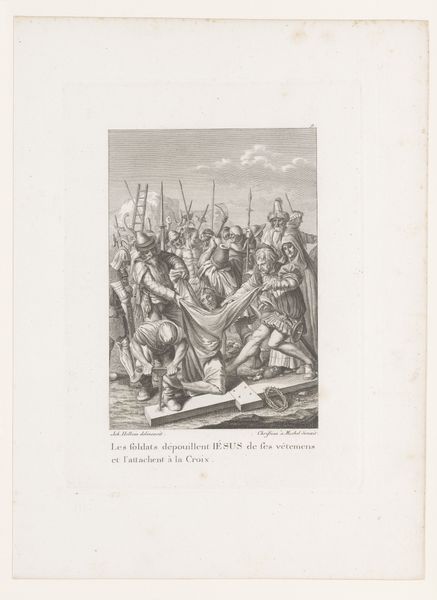
print, paper, engraving
#
16_19th-century
#
narrative-art
#
ink paper printed
# print
#
classical-realism
#
paper
#
romanticism
#
history-painting
#
academic-art
#
engraving
#
realism
Dimensions: height 376 mm, width 300 mm
Copyright: Rijks Museum: Open Domain
Curator: This engraving from 1841 depicts Willem III being inaugurated as Lord of Friesland in 1328. It’s housed here at the Rijksmuseum. Editor: It has a striking formality. The almost severe, clean lines emphasize a monumental quality despite the relatively small scale. Curator: Yes, the composition places Willem high above the crowd, emphasizing his authority and legitimizing his rule within a visual culture that supported monarchy. Prints like these played a critical role in shaping public opinion. Editor: Observe the meticulous rendering of textures, from the regal velvet cloak and shiny armor to the soldiers’ uniforms and horse tack, not to mention the stark castle silhouette, that altogether heightens the image’s sense of realistic granduer. It draws us to examine these elements to reconstruct meaning. Curator: It certainly romanticizes the past, tapping into a longing for a perceived golden age of Dutch power, quite common during the 19th century's rise of nationalism. Consider how the architecture acts as an eternal, unwavering witness. Editor: While I understand its historical role in nationalist narratives, I find the work formally fascinating in how it manages the relationship between individual and group, particularly when attention shifts toward linear detail defining form. Curator: The artist presents an interpretation that blends history with contemporary political needs. The print's purpose wasn't just to record an event, but also to mold perceptions. It embodies how institutions use art to advance ideologies. Editor: An important observation. Still, I am consistently pulled back to how the engraving translates visual complexity into contrasting shades of gray. It creates this balanced visual experience and guides the observer’s eye seamlessly, a noteworthy visual accomplishment in itself. Curator: Precisely, understanding the artistic license helps reveal how history is presented to and perceived by the public, further shaping civic awareness and sentiment. Editor: I see what you are hinting at, very insightful. On my end, recognizing visual order amidst apparent complexity really allows a broader appreciation of visual design.
Comments
No comments
Be the first to comment and join the conversation on the ultimate creative platform.
